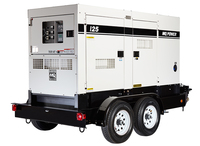Emergency Preparedness for Businesses
Emergency preparedness is a fundamental part of being a responsible business owner to keep your valued workers safe and protect your assets. Having a plan of action can save lives and potentially save your business. Let’s look at seven important steps for making sure your business is equipped to handle what may be thrown at it.
Step 1: Risk Assessment
First things first, you need to assess some of the top risks to your business. Think location: Do you live in an area where tornadoes are frequent? Are you in California, where earthquakes are a common occurrence? Knowing the most common risk factors for your business’s location will help you to better tailor your response plan.
Secondly, think about what you work with. If you work with hazardous materials, a leak or accidental reaction is a risk for your business. Once you’ve identified your risks, it’s time to move onto the next step.
Step 2: Team Building
Next, you need to build a team of individuals to help you plan and organize. There needs to be clear roles and responsibilities for team members, such as those in charge of first aid, conducting head counts and so on.
Having designated roles means that the right people are in charge of the right things in times of emergency.
Step 3: Action Plan
When your team is in place and your plan is starting to take place, you need to delve into the details. How will you organize and deploy your team to ensure that vital factors such as evacuation and first aid are undertaken quickly and efficiently?
Have an evacuation plan and meeting place in case of fire and make sure everyone knows the safest place in the building for a tornado.
It’s not something we may want to consider, but you need to have an answer to these questions: What if one of your team members is missing? Who takes charge if you or the next in command are absent or incapacitated?
Step 4: Training
You can’t just point at a staff member and say, “You’re now in charge of first aid,” or “You’ll be doing the head count.” You need to ensure your staff have regular and up-to-date training. Emergencies are high-stress events and staff members need to be prepared for how this might impact them.
Step 5: Supply Chain Concerns and Stockpiling
While the main focus of a preparedness plan should be on making sure everyone is safe, you next need to think about the days and weeks after the event. You’ll want to reopen as swiftly as possible to avoid big financial losses and also return to some sense of normalcy.
You need to have an emergency response kit. You will also want to have some sort of generator available in case the power is down for an extended period of time or business needs to be done at a secondary location.
Allied Rental Company has many different diesel-fueled generators that can power your business for days or months, available for rental anytime. You can check out the selection here on our website or talk to one of our friendly staff members.
Step 7: Revisit
You should revisit your plan on a yearly basis. Factors in your business can rapidly change and you don’t want to be left with an out of date plan when lives are on the line.

